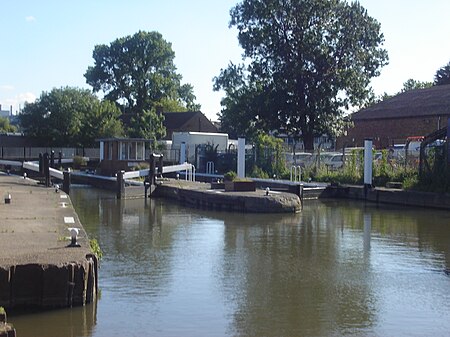Ponder's End Lock
Enfield, LondonGeography of the London Borough of EnfieldLocks of LondonLocks of the Lee NavigationLondon building and structure stubs ... and 1 more
Use British English from June 2015

Ponders End Lock (No 14) is a paired lock on the River Lee Navigation in England and is located near Ponders End, London. It is the last lock upstream that is large enough to take barges of up to 130 tons.
Excerpt from the Wikipedia article Ponder's End Lock (License: CC BY-SA 3.0, Authors, Images).Ponder's End Lock
Wharf Road, London Ponders End (London Borough of Enfield)
Geographical coordinates (GPS) Address Nearby Places Show on map
Geographical coordinates (GPS)
| Latitude | Longitude |
|---|---|
| N 51.641995 ° | E -0.030019 ° |
Address
Ponders End Water Point
Wharf Road
EN3 4TJ London, Ponders End (London Borough of Enfield)
England, United Kingdom
Open on Google Maps








